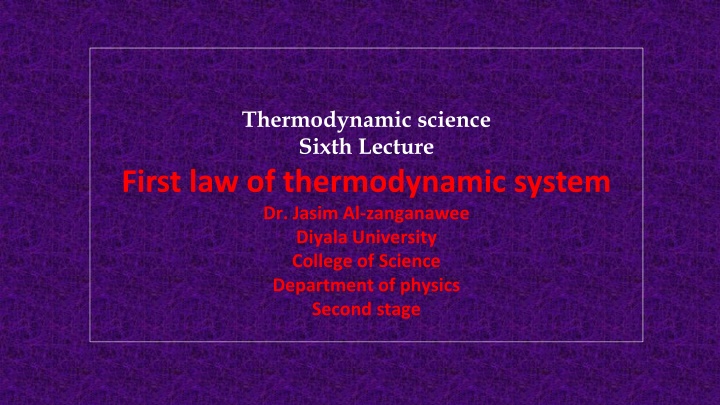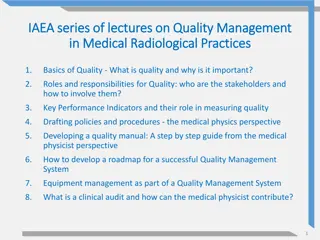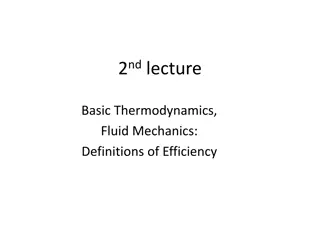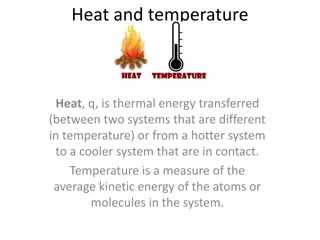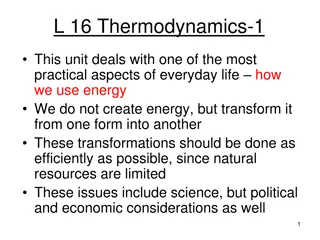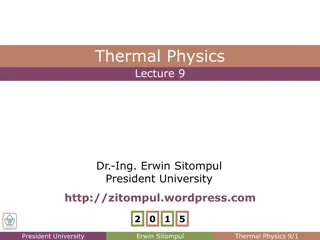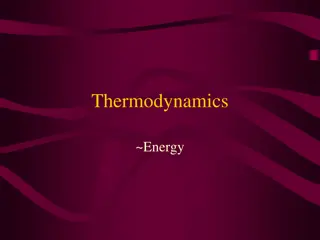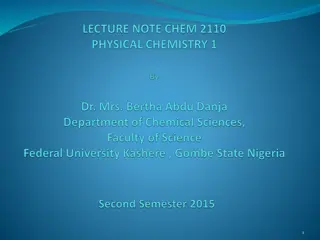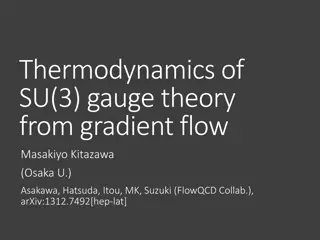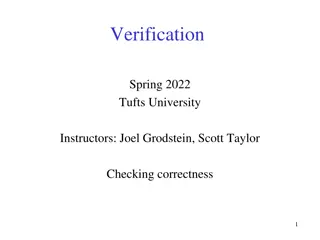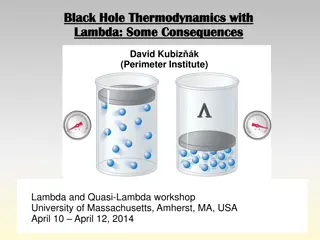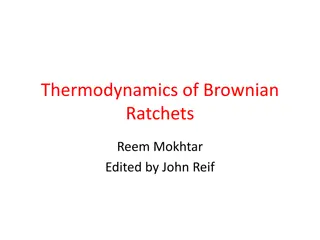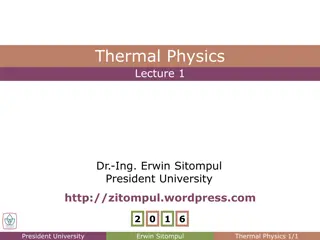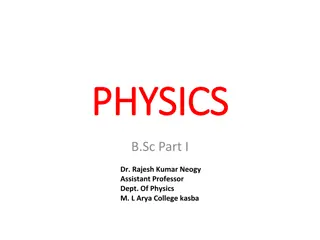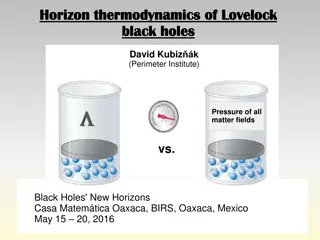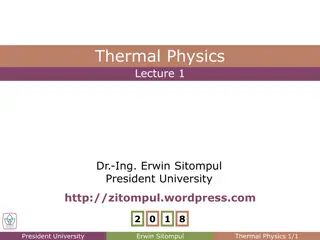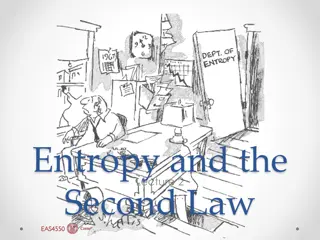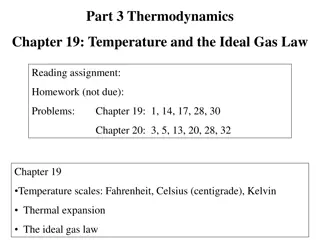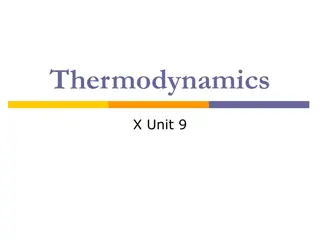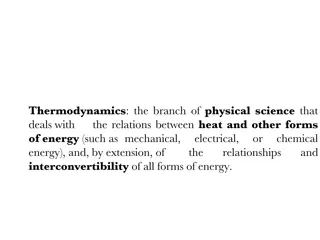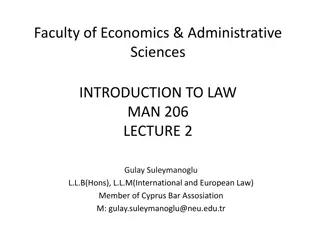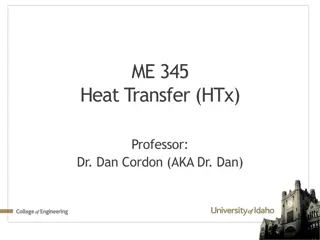The First Law of Thermodynamics in Science Lectures
Explore the concept of the First Law of Thermodynamics through a series of engaging science lectures by Dr. Jasim Al-zanganawee from Diyala University. Learn about energy transfer, conservation, internal energy of ideal gases, and how heat and work impact a system's total energy. Discover the relationship between heat flow, work done, and changes in internal energy, with practical examples from various sources like combustion and conduction of heat. Gain insights into the importance of path chosen between states and the impact of temperature changes on internal energy.
Download Presentation

Please find below an Image/Link to download the presentation.
The content on the website is provided AS IS for your information and personal use only. It may not be sold, licensed, or shared on other websites without obtaining consent from the author.If you encounter any issues during the download, it is possible that the publisher has removed the file from their server.
You are allowed to download the files provided on this website for personal or commercial use, subject to the condition that they are used lawfully. All files are the property of their respective owners.
The content on the website is provided AS IS for your information and personal use only. It may not be sold, licensed, or shared on other websites without obtaining consent from the author.
E N D
Presentation Transcript
Thermodynamic science Sixth Lecture First law of thermodynamic system Dr. Jasim Al-zanganawee Diyala University College of Science Department of physics Second stage
Learning Goals for this lecture Page 1 Interpret & use 1st law of thermodynamics. Why internal energy of ideal gas depends on temperature only.
First law of thermodynamics -- Heat and work are forms of energy transfer and energy is conserved. . The first law of thermodynamics says the change in internal energy of a system is equal to the heat flow into the system mins the work done by the system (conservation of energy). = First law of thermodynamics = general reflection of conservation of energy. Page 19
First law of thermodynamics -- Heat and work are forms of energy transfer and energy is conserved. U = Q + Won change in work done on the system heat added to system total internal energy State Function Process Functions or U = Q - Wby . 4 Page 20
First law of thermodynamics Uinternal = +Q in W out Types of +Qin: Chemical Energy (Gasoline, Diesel) through combustion ) ( Conduction of Heat from Hot reservoir (steam from a boiler or nuclear power plant) ) ( Absorption of heat from solar energy Page 21
First law of thermodynamics Uinternal = +Q in W out Types of W out: Expansion of Pistons (Internal combustion & steam engines) ) ( Turning of a rotor (solar powered fan) ) ( Page 22
First law of thermodynamics Both Q & W depend on path chosen between states But net change of internal U depends on change in T only is independentofpath! If changes are infinitesimal, first law = dU = dQ dW. Page 23
First law of thermodynamics Suppose more heat is added to system + Q in than system does work +W by gas by expanding. Internal energy of system increases (gas heats up!) Page 24
First law of thermodynamics Suppose heat added TO system + Q in equals work done BY system +W by gas Internal energy of system is unchanged (no change in T) Page 25
Example :Using the first law. Suppose more heat flows out of system - Q in than work is done ON the gas -W on gas Internal energy of system decreases (gas cools!) Page 26
First law of thermodynamics Example: 2500 J of heat is added to a gas under a piston in a closed cylinder, and 1800 J of work is done by the system as its piston expands. What is the change in internal energy of the system? uinternal = +Q in W out u = +2500 J (1800J) = +700 J Page 27
Example :Using the first law. Example: 2500 J of heat is added to a gas under a piston in a closed cylinder, and 1800 J of work is done on the system as the piston is pushed back down. What is the change in internal energy of the system? Uinternal = +Q in W out U = +2500 J (-1800J) = +4300 J Page 27
First law of exercise thermodynamics Your body is a thermodynamic system. Do a push-up! Your body does work! Wby system> 0. Your body also warms up during exercise; by perspiration & radiation & conduction, body gives off this heat, so Qin < 0. . Since Qinnegative & Wby systempositive, U = Q W < 0 Your body s internal energy decreases. Exercise helps you lose weight, using up some of internal energy stored in your body in form of fat. Page 29
First law of thermodynamics Both Q & W depend on path chosen between states But net change of internal E depends on change in T only is independentofpath! Page 30
Internal energy Internal energy of coffee depends on just its thermodynamic state how much water & ground coffee it contains, & its temperature. - Internal energy does NOT depend on history of how coffee was prepared (thermodynamic path leading to current state) - ( ) Page 31
